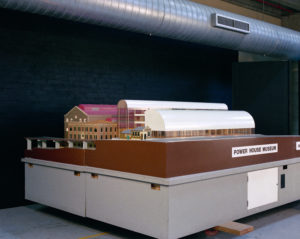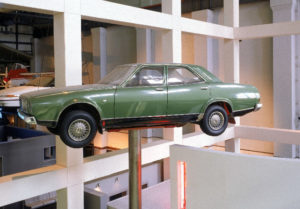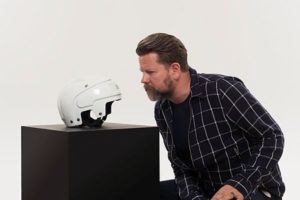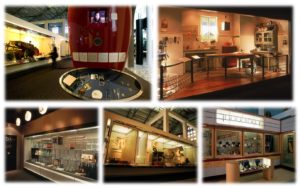Colonised Australia felt it had grown into an independent, and quite sexy young adult by the 1980s. The 1988 bicentenary was a celebration of all that Europeans had acheived in Australia in 200 years. It was also a year which benefited from the optimism of the Wran NSW Labor Government – which commissioned, among other public institutions and spaces, the ingeniously designed converted power station as the new home for the Museum of Applied Arts and Sciences in Ultimo, Sydney.

The Museum was unique, and its direction was coveted in the museum world. Indeed, museum professionals came from all over the world to learn how the Powerhouse Museum did things.
One of the things the Museum did was to show and interpret design, and particularly Australian designed (and manufactured) objects in a manner which made the mundane anything but mundane.
Tim Ross, comedian and design commentator, visited the Powerhouse as a young man and was moved by the objects of his world which were on display and having their stories told. The Leyland P76, the Victa lawnmower, and the now-iconic MOJO advertisements – all given the status of celebrated and revered artefacts.

The impact of this visit never left Ross’s mind, and now he has had the opportunity to choose objects from the Museum’s collection and co-curate them in a new display which reflects the Powerhouse Museum’s smart interrogation of the everyday. Design Nation, which opens in March 2018 as part of Sydney Design Festival 2018, explores, through Tim Ross’s humorous and insightful gaze, objects representative of Australia’s golden age of product design.
One of the striking aspects of Australian designed and made products from this era is the sleek and seamless aesthetic that the objects engendered, and the high-gloss, radiant finishes in primary colours. This was achieved largely due to the advances, repeatability and affordability of injection moulding. The process of injection moulding involves material being fed into a plastic injection machine where it is heated, mixed, and forced into a mould cavity where it cools and hardens to the configuration of the cavity. Lightweight material of almost any imaginable shape was possible.

By the 1970s, Australia was out of England’s long shadow and, basking in the attention that the USA was paying to all things Aussie, Australian designers and manufacturers achieved recognition, and many products became internationally successful, and received that ultimate mark of success – they were copied (for example, the original can be seen here, a copy here.)
Researching, collecting and documenting objects which appear, or have appeared in many people’s everyday lives is a nuanced skill. Patrick White, the Australian Nobel Prize-wining author was a master of exploring the mundane, and revealing the richness of narrative, and often unexpected anomalies. The Aunt’s Story, The Tree of Man, The Solid Mandala are all, if one was to describe the content, about people without real significance; however, what those novels disclose is a world of incredible significance. White looked through the mask of the unexceptional to lay bare the fascinating reality of life.
Curators at the Powerhouse Museum who work with objects which are familiar to the community have developed a similar skill to White’s subtle exposition of the everyday. Design Nation, curated with the like-minded Tim Ross, rejoins the wonderful suite of exhibitions which made the Museum a uniquely accessible institution after its opening in 1988 – Success and Innovation, Never Done, Brewing and Pubs, and Pills and Potions, among other multidisciplinary exhibits.

If you would like a sneak preview of some of the objects Tim Ross has selected for display, click here!
